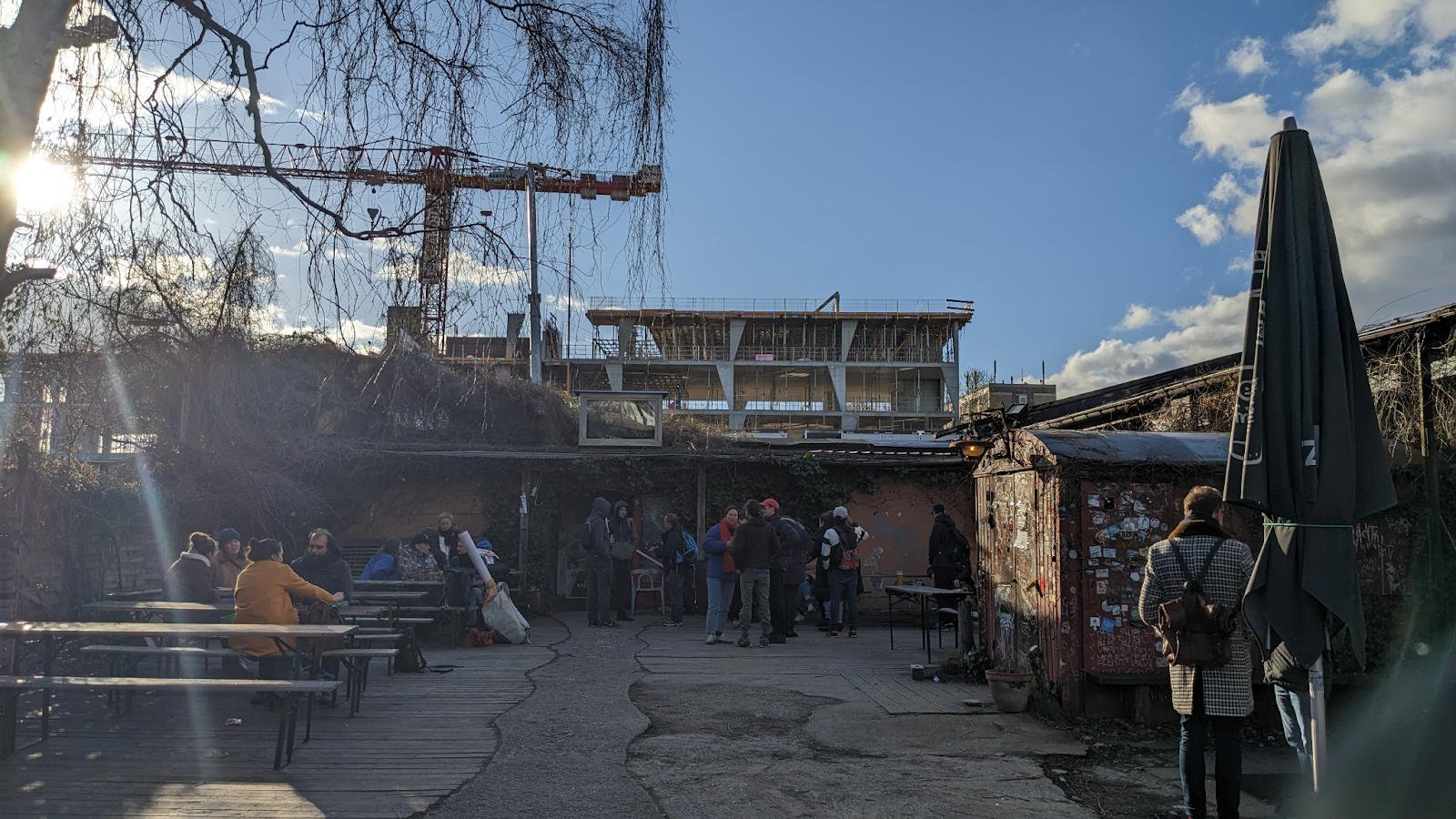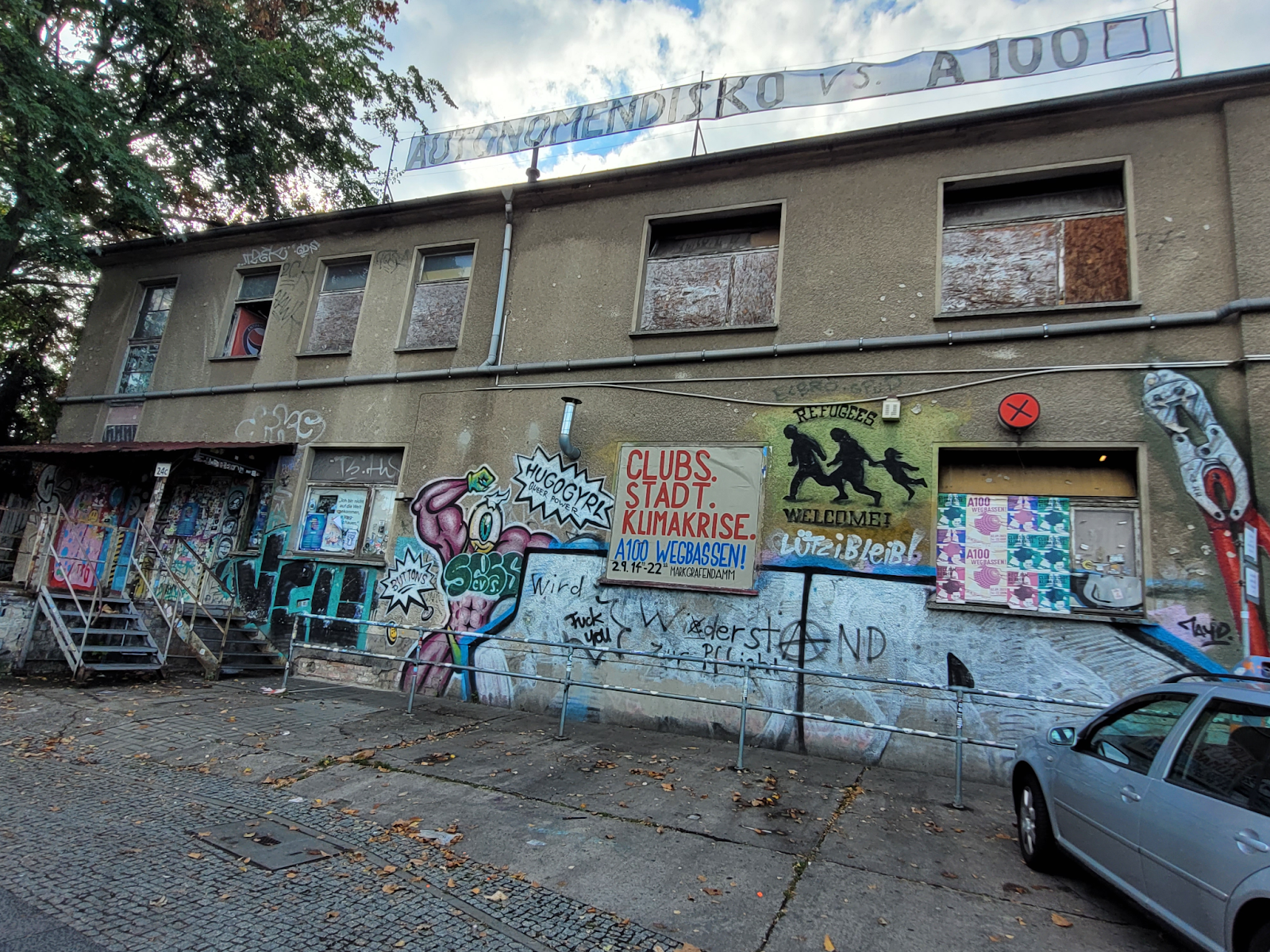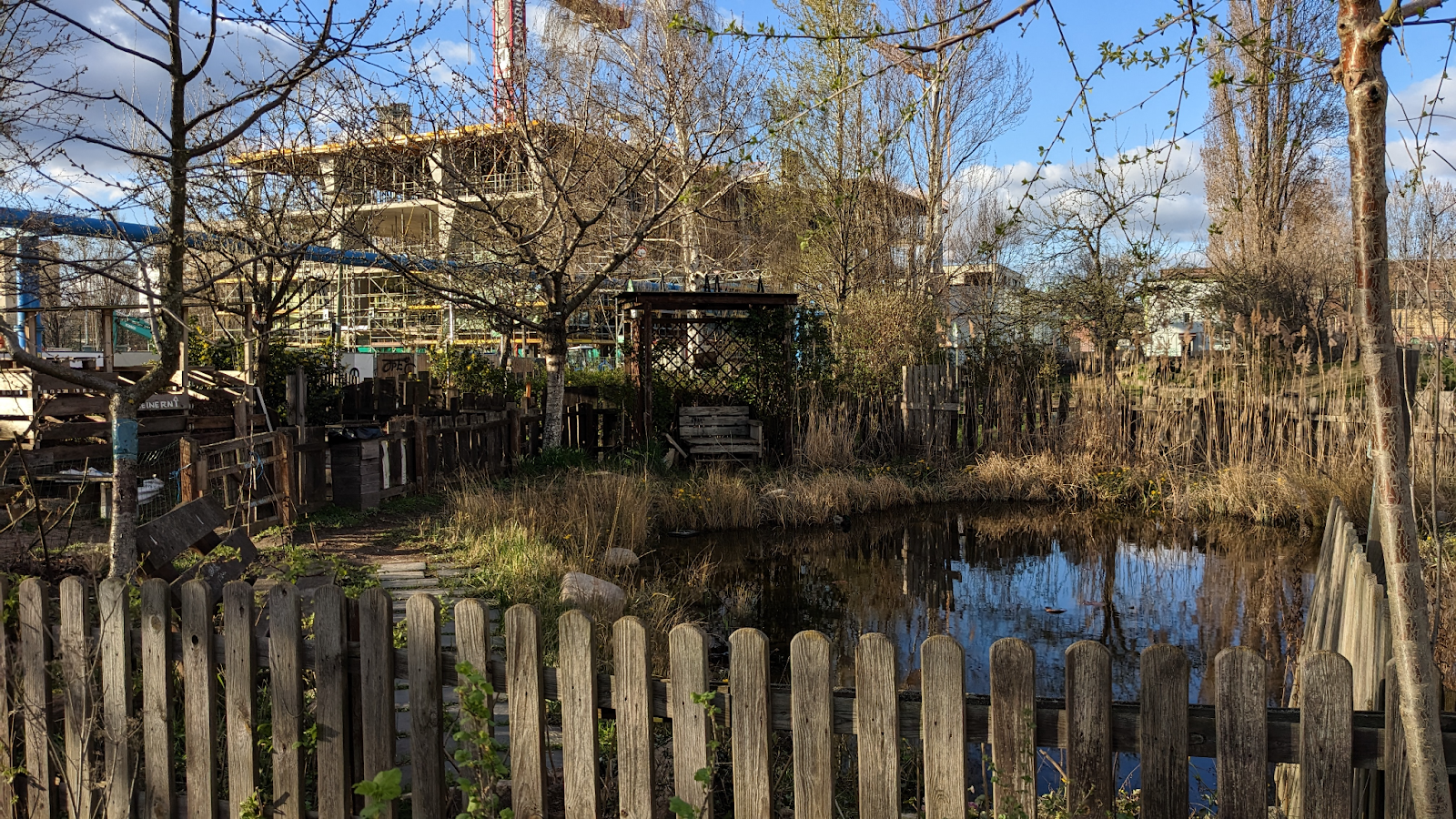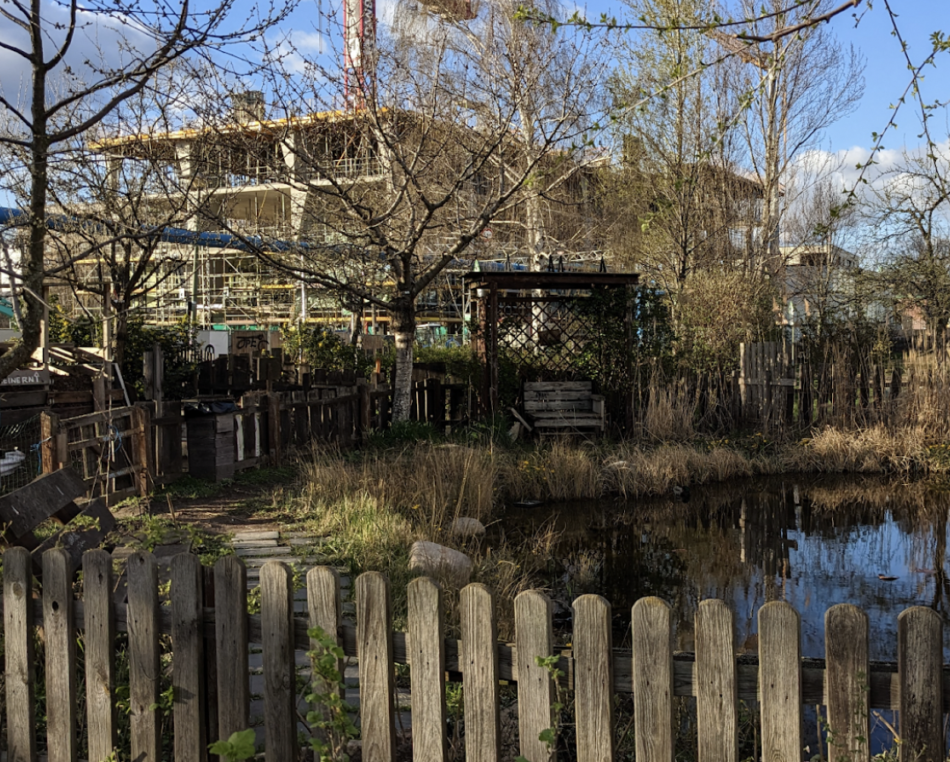Written by:
by Olivia Hanson
Olivia taught secondary school English and ran a street kitchen in Hackney until 2021, when she started an MA in Intercultural Conflict Management in Berlin. While there, her interest in housing and spatial justice continued to grow. She set up FlatWise, a housing advice programme for refugees and immigrants, and wrote extensively for her Masters about the impacts of gentrification and privatisation on urban populations. Undertaking months of qualitative research for her thesis, she focused on several ‘community-made’ places that are threatened by corporate and infrastructure projects, analysing their importance to their Berlin neighbourhood and beyond. With her thesis completed, she continues to be involved in housing activism and to run FlatWise workshops, while looking for a role in the NGO or public sector.
‘It’s Berlin you can touch’
When I moved to Berlin, I immediately felt a different relationship with the city than I had with London. I had an underlying sense that, despite being a newcomer, I could shape the city if I wanted to. Everyone seemed to be starting a project or creating a new space. Soon enough, I was involved in housing rights activism, sticking posters on lamp-posts, and transforming the patch of scrubland outside my flat into a wildflower garden.
But I still couldn’t put my finger on why exactly Berlin felt so different to London. I turned to the urban geographer David Harvey. He got somewhere close when he defined the right to the city* – as ‘a right to change and reinvent the city more after our hearts’ desire’. I had, and everyone around me seemed to have, a real sense of ownership over the city and its future.
At the same time, there is a clear understanding among Berlin’s residents that their right to the city is diminishing. Rents are exploding, shiny new office blocks grow thick and fast, and every month it seems a beloved community or cultural institution disappears.
So when it came to writing my Master thesis, I knew I wanted to use the opportunity to find out more about what had allowed community-built places in the city to flourish, and what the impact would be now that they were dwindling.
I focused my research in a particular neighbourhood in Friedrichshain, east Berlin. Here, the existence of a cultural venue, two night clubs, a community garden, and several artists’ studios and workshops, is threatened by gentrification and, more bizarrely, by federal government plans for a motorway extension that have been kicking around since the 1930s.

The places in question all developed thanks to the Berlin Senate’s policy of ‘Zwischennutzung’ or ‘interim use’. Since Reunification in 1990, Berlin’s government had been embarrassed by the abundance of ‘urban voids’ in the city – wastelands left by bombs, the Wall and East Berlin’s ‘death corridor’. Expecting a wave of investment in the early ‘90s to fill these voids – and being disappointed – they soon realised that actually the voids were being filled, but by residents, not investors. Beach bars, clubs, galleries, gardens, alternative co-housing and more grew in gaps around the city. Set up by artist and political collectives, neighbours and communities, they were distinguishable by their ‘urban bricolage’ approach to construction — the ingenious use of whatever low-cost, recycled materials there are to hand.
The Senate realised how useful these places could be in bolstering their marketing of Berlin as a ‘creative city’. So it allowed them to stay – effectively sanctioning pure, unadulterated community-led placemaking to transform the city. But there was a sting in the tail: as soon as the big investors turned up – and they would, drawn by the creative buzz generated by these ‘Zwischennutzung’ places – the original placemakers would have to go.

Most of these ‘interim’ places have been fixtures in the city for over 12 years – but this sting in the tail is now being felt. So what impact is it having, both on communities and on the identity of the city itself?
My interviews with Friedrichshain residents suggested again and again that the places under threat are so much greater than the sum of their parts, and for that reason, the impact of their loss would be severe. These places are ‘second homes’ and ‘my other living room’. They are cosy and welcoming, cheap and accessible. They allow ‘people to meet who wouldn’t usually’, facilitating the kinds of encounters that as Morag Rose writes, ‘break down barriers… and turn the ‘other’ into the individual’. With their unkempt gardens and wild plants, they provide green oases in the city and allow birds and insects to thrive. They are filled with memories and emotions – binding their regulars to the stories of the neighbourhood and of the city. Moreover they form important fixtures in Berlin’s maps of solidarity – spaces in which activists and community groups can meet to organise themselves. They were also seen by all respondents as essential to Berlin’s identity. One told me, ‘they are ‘creative, green, alternative – Berlin you can touch’. Another said that they ‘are more like a grown place. They are impossible to reconstruct. You could build… offices again and again. Once [these places] are gone, they’re gone forever…’. He openly worried: ‘What will happen to the tourists? Will they still come if these places disappear? What will that do to the city?’ To another, the impact also felt existential: ‘if they [the venues] cease to exist, irretrievable places will die. And thus also precisely this kind of culture that not only makes life worth living, but is essential for survival’.


It can be so easy, in the face of limited budgets, funding cuts, and expanding urban populations, for decision-makers to forget what actually makes a city tick. Its residents, communities, cultural actors – the events they run and the social places they create – all of these things shape the urban identity far more than glossy workspaces, shopping centres, or indeed motorways. I see how an urban planner might shudder at the shabby appearance of many of these ‘Zwischennutzung’ places, but efforts must be made to value urban spaces for their social, environmental and community-building impacts, and not only for their aesthetics and turnover. The ongoing health of the city and of its population depends on it.
*originally conceived in 1968 by the Marxist sociologist and philosopher, Henri Lefebvre.
Thank you for contributing to our The Glass-House blog series. This is the first out of two blogs Olivia will be writing for us. Stay tuned for me from Olivia Hanson.

